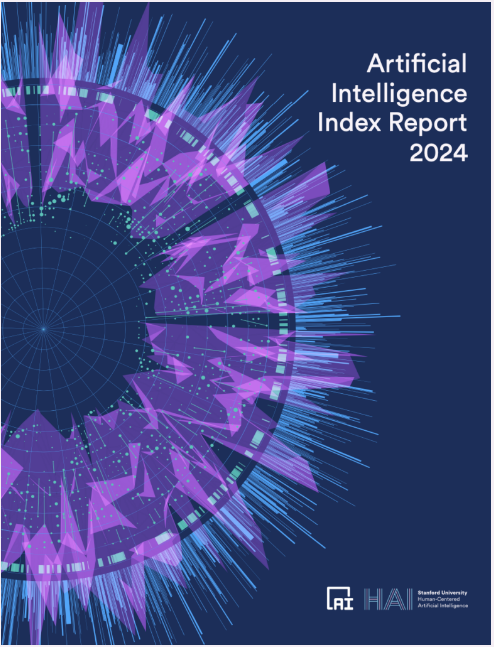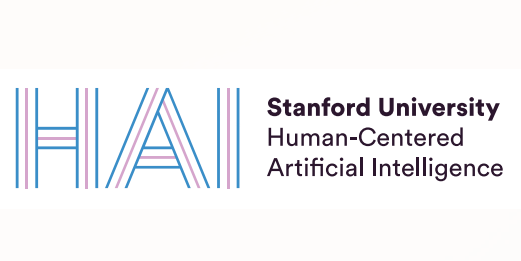The AI Index Report from Stanford’s Institute for Human-Centered AI is out, it’s an annual, thoroughgoing snapshot of the state of AI begun by the HAI in 2019. This year’s edition presents new estimates on AI training costs, analysis of the responsible AI landscape, AI and worker productivity and a new chapter about AI’s impact on medicine and scientific discovery.
In its introductory remarks, co-directors Ray Perrault of SRI International and Jack Clark, a co-founder of Anthropic (an OpenAI /ChatGPT competitor that has attracted $4 billion in funding from Amazon), note the tremendous gains AI has made over the past 10 years.
“A decade ago, the best AI systems in the world were unable to classify objects in images at a human level. AI struggled with language comprehension and could not solve math problems. Today, AI systems routinely exceed human performance on standard benchmarks. Progress accelerated in 2023. New state-of-the-art systems like GPT-4, Gemini, and (Anthropic’s) Claude 3 are impressively multimodal: They can generate fluent text in dozens of languages, process audio, and even explain memes. As AI has improved, it has increasingly forced its way into our lives. Companies are racing to build AI-based products, and AI is increasingly being used by the general public.”
That said, they also state that that AI technology still falls short in important areas. “It cannot reliably deal with facts, perform complex reasoning, or explain its conclusions.”

Here’s a link to the full report is here, https://stanford.io/49CbsZp, which includes these top 10 takeaways elaborated on in the report — we quote the following from the report:
- AI has surpassed human performance on several benchmarks, including some in image classification, visual reasoning, and English understanding. Yet it trails behind on more complex tasks like competition-level mathematics, visual commonsense reasoning and planning.
- Industry continues to dominate frontier AI research. In 2023, industry produced 51 notable machine learning models, while academia contributed only 15. There were also 21 notable models resulting from industry-academia collaborations in 2023, a new high.
- Frontier models get way more expensive. According to AI Index estimates, the training costs of state-of-the-art AI models have reached unprecedented levels. For example, OpenAI’s GPT-4 used an
estimated $78 million worth of compute to train, while Google’s Gemini Ultra cost $191 million for compute. - The United States leads China, the EU, and the U.K. as the leading source of top AI models. In 2023, 61 notable AI models originated from U.S.-based institutions, far outpacing the European Union’s 21 and China’s 15.
- Robust and standardized evaluations for LLM responsibility are seriously lacking. New research from the AI Index reveals a significant lack of standardization in responsible AI reporting. Leading developers, including OpenAI, Google, and Anthropic, primarily test their models against different responsible AI benchmarks. This practice complicates efforts to systematically compare the risks and limitations of top AI models.
- Generative AI investment skyrockets. Despite a decline in overall AI private investment last year, funding for generative AI surged, nearly octupling from 2022 to reach $25.2 billion. Major players in the generative AI space, including OpenAI, Anthropic, Hugging Face, and Inflection, reported substantial fundraising rounds.
- The data is in: AI makes workers more productive and leads to higher quality work. In 2023, several studies assessed AI’s impact on labor, suggesting that AI enables workers to complete tasks more quickly and to improve the quality of their output. These studies also demonstrated AI’s potential to bridge the skill gap between low- and high-skilled workers. Still, other studies caution that using AI without proper oversight can lead to diminished performance.
- Scientific progress accelerates even further, thanks to AI. In 2022, AI began to advance scientific discovery. 2023, however, saw the launch of even more significant science-related AI applications—from AlphaDev, which makes algorithmic sorting more efficient, to GNoME, which facilitates the process of materials discovery.
- The number of AI regulations in the United States sharply increases. The number of AIrelated regulations in the U.S. has risen significantly in the past year and over the last five years. In 2023, there were 25 AI-related regulations, up from just one in 2016. Last year alone, the total number of AI-related regulations grew by 56.3 percent.
- People across the globe are more cognizant of AI’s potential impact—and more nervous. A survey from Ipsos shows that, over the last year, the proportion of those who think AI will dramatically affect their lives in the next three to five years has increased from 60https://insidehpc.com/2024/03/amazon-adds-2-75b-to-stake-in-genai-startup-anthropic/ercent to 66 percent. Moreover, 52 percent express nervousness toward AI products and services, marking a 13 percentage point rise from 2022. In America, Pew data suggests that 52 percent of Americans report feeling more concerned than excited about AI, rising from 37 percent in 2022.





Speak Your Mind